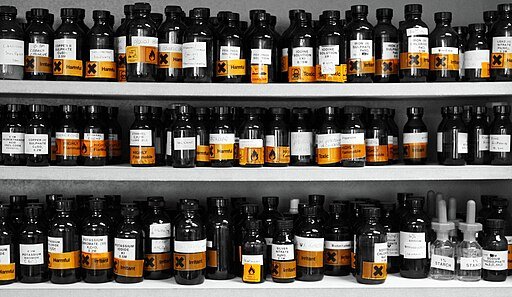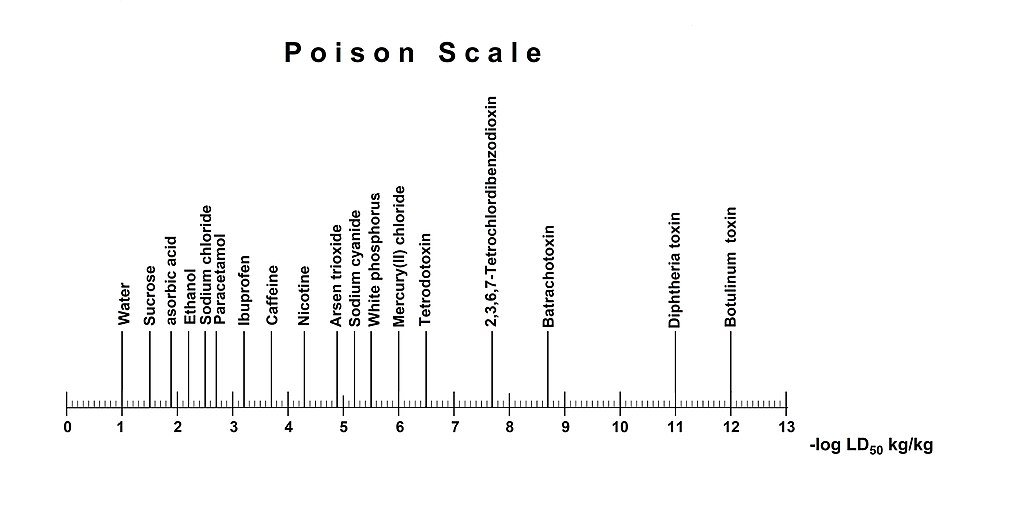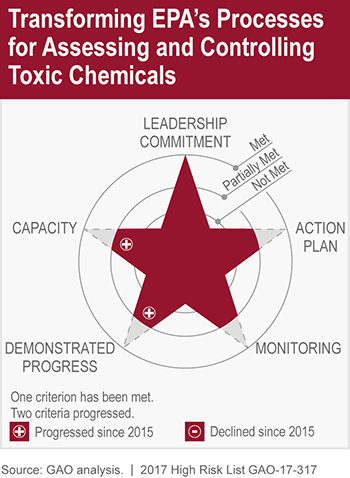Deborah Tosline wrote and published “Skin Remodeling DIY: An Introduction to the Underground World of Do-It-Yourself Skincare” in 2015. Her approach to skin care is based on a scientific background, love of research and over 40 years of DIY skincare experience.
My story is simple. As a teenager, I realized that I needed to be able to take care of myself for the rest of my life. As a young adult, I understood that I was miserable working when I did not feel well. I decided that I would do everything in my power to maintain my health including embracing nature-based practices and avoiding synthetic chemicals.
I’ve used commercial synthetic based products. Most of the time, it’s impossible to avoid them in the United States (U.S.) mainstream culture however I continuously strive towards simple, non-toxic, whole and natural foods, ingredients, containers and fibers.
When minimizing and eliminating synthetic chemicals it is important to avoid everything with added “fragrance”. Synthetic fragrances are pervasive in our culture yet they contain chemicals that are known to be hazardous to health. I use products that only contain pure essential oils for scents.
“The negative impact of fragrance chemicals on human health includes cutaneous, respiratory, and systemic effects (e.g., headaches, asthma attacks, breathing difficulties, cardiovascular and neurological problems) and distress in workplaces.”
The chemicals used in synthetic fragrances and plastics can disrupt hormones. This is important to men and women because hormones are chemical messengers for everything in our body.
Synthetic chemicals that are known to be carcinogenic are ubiquitous in our culture. For example, as required by the Safe Drinking Water and Toxic Enforcement Act of 1986, the state of California annually develops a list of common synthetic chemicals that are used in California and are known to cause cancer or reproductive toxicity. Check out the 23-page list of toxic chemicals here.
The chemicals in the list include “additives or ingredients in pesticides, common household products, food, drugs, dyes, or solvents… used in manufacturing and construction, or they may be byproducts of chemical processes, such as motor vehicle exhaust.”
Do you check your lingerie and clothing labels? Synthetic fabrics are comprised of a variety of toxic chemicals that are used in textile manufacturing. For example, polyester emits phytoestrogens that act as endocrine disruptors, can cause cancer, impact the reproductive system and increase the chemical load in our body.
https://commons.wikimedia.org/wiki/File:I_Heart_Small_Bottles_of_Chemicals_4890752060.jpg
http://www.cgpgrey.com, CC BY 2.0 <https://creativecommons.org/licenses/by/2.0>, via Wikimedia Commons
There are an incomprehensible number of synthetic chemicals mixing, mingling and negatively impacting us throughout our municipalities, businesses and homes.
I know that my organs can only process a certain amount of toxic waste before they will become overloaded and I will be sick. The constant production of synthetic chemicals in the U.S. mainstream culture and our comprehensive exposure to a variety of synthetic chemicals requires that our body process a heavy toxin load. The amount of synthetic chemicals that our organs have to process is the body burden.
Do you want to know your body burden? It is possible to detect chemicals in blood using laboratory analytical techniques. Chemical concentrations detected in the body at the time that the blood sample was collected would be the body burden at that moment. Some chemicals remain in the body even after the chemical source is eliminated.
It is reported that 62% of the chemical volume used in the European Union is hazardous to humans and the environment. It is important to support regulations that protect us from the risks and hazards of synthetic chemical exposure.
We are exposed to synthetic chemicals via ingestion, absorption, and inhalation.
When I assess my body burden, I recognize that my primary chemical exposure is due to living in a large city with mainstream environmental pollution. As I move through this environment including: work, public, and commercial buildings and landscapes; streets and traffic; and industrial areas; I am constantly exposed to toxins.
In my personal life, decades ago I began to minimize my exposure by eliminating sources of chemical pollution and implementing nourishing, healing and cleansing practices to support my organ function and health.
https://commons.wikimedia.org/wiki/File:Wikipedia-Poison_Scale3.jpg, Konzertmeister, CC BY-SA 4.0 <https://creativecommons.org/licenses/by-sa/4.0>, via Wikimedia Commons
Our bodies use these five organs to filter waste:
Liver – the largest, most stressed organ removes waste, toxins, and carcinogenic substances.
Intestines – process a heavy load of toxic waste from the foods and beverages that we consume.
Kidneys – filter waste from the blood.
Lungs – filter the air that we breathe and eliminate gases.
Skin - excretes waste via sweat and oil glands.
We are exposed to a multitude of synthetic chemicals on a daily basis including:
Pesticides, fertilizers, preservatives, hormones, and anti-biotics in food.
Fragrances, preservatives, and a multitude of synthetic chemicals in personal care products.
Food, personal care and other product packaging.
Synthetic chemicals and treatments in and on clothing.
Cleaning products with their toxic brew of synthetic chemicals.
Synthetic chemicals and treatments on cabinetry, furniture, window coverings, flooring, and other interior coverings.
Off-gassing of volatile organic chemicals in new cars, interior paint and home furnishings.
Use the Environmental Working Group website here to check for potential toxic chemicals in the products that you use and any ingredients that you are concerned about. EWG provides a toxicity rating for products based on different categories and identifies products with low toxicity.
My life tendencies lean towards natural and sustainable. I avoid synthetic chemicals to the maximum extent possible to minimize my body burden. I follow a holistically healthy lifestyle to support my organ health and promote the elimination of toxins. I try to implement as many practices as possible to protect my health and keep myself in good condition.
Early days, I was economically challenged. I realized that being environmental and frugal go hand in hand. You can protect your health, save money and the earth by using basic natural ingredients and minimize your exposure to synthetic chemicals, with a little effort. I am a Do-It-Yourself (DIY), low budget, elbow grease, sweat equity type of person. If I can avoid chemicals by doing it myself and using an “old-fashioned” method, I will. It helps that I am highly motivated and am able to squeeze many tasks into my work days and weekends. Despite the time investment, I still get 7 to 9 hours of sleep a night.
To minimize my body burden, I practice the following:
Eat clean, whole foods
Consume organic, unprocessed foods
Join a food coop
Grow a garden
Wear natural fibers – cotton, linen, wool, silk
Boycott synthetic fibers, this forever garbage does not decompose
Buy quality, no more “fast-fashion”
Clothing can be pricy. Buy used. My primarily natural wardrobe is 95% thrift-store (50% off days), 3% eBay, and 2% brand new
Natural fibers are safe, sustainable, and biodegradable
Use clean Personal Care Products – check your products and their ingredients on the EWG site
Shampoo/conditioner
Creams and lotions
Sunscreen
Deodorant / antiperspirant
Dental products
Feminine products
Masculine products
Safe cleaning products
Make DIY cleaning products
Purchase sustainable cost-effective products
Select “no to low” chemical contents in your dish and dishwasher soap, laundry soap, and specialized cleaning products - many dishwasher detergents leave unhealthy residues
Do not use products that contain toxic chemicals and fragrances
Select products that use eco-packaging
My favorite cleaning supplies are baking soda, vinegar, washing soda, castile soap, vodka in a spray bottle and lately, Charlie’s cleaning products (not affiliated).
House furnishings
We’re bombarded with chemical laden house furnishings that breakdown and off-gas continuously over time.
Choose natural furnishings whenever possible, if you can find them. New natural materials can be expensive, purchase used and refurbish solid wood furniture.
To save money, find used natural window coverings.
Glass, metal, wood and natural fibers may be the safest materials for indoor furnishings depending on their final treatments
Interior wall and floor covering
You’ll have to go out of your way to find economical natural solutions.
Use floor coverings that do not off-gas volatile chemicals or particles.
Use clay paint on interior ceilings and walls (not affiliated) – I did this and love it.
Apply a clay finish to interior walls (not affiliated) – I did this and love, love, love!
If you do not have $$$ to hire nature-based contractors, use sweat equity and creativity.
https://commons.wikimedia.org/wiki/File:GAO%E2%80%99s_2017_High_Risk_List_Transforming_EPA%27s_Process_for_Assessing_and_Controlling_Toxic_Chemicals_(32101833153).png, U.S. Government Accountability Office from Washington, DC, United States, Public domain, via Wikimedia Commons
I continue to build, broaden and evolve my real whole sustainable lifestyle. I try to never purchase fragranced items; although this can be difficult in our culture. I avoid perfumed or cologned folks, products and places. I avoid chemicals in my food, clothing, belongings and home treatments and know that this is the best lifestyle for me to maintain good health in the hope that I may do as I like and take good care of myself into the future.
Vote with your dollars and boycott toxic chemical suppliers, manufacturers and retailers. Use the internet to find basic, sustainable products and hand-crafted items made from sustainable materials.
Avoiding synthetic chemicals is a paradigm shift that can only happen with you and each and every one of us based on what we are willing to purchase.
If you need more information, check out the local library, search the Internet, or check out my past Blog articles. It would be an honor to me if you purchased my facial care book. Thank you!
Take good care of yourselves!
XO Deborah
This article is intended to be used as general information only and is in no way intended to replace medical advice, be used as a medical treatment program, diagnosis, or cure of any disease or medical condition. There are no warranties, expressed or implied, regarding the effectiveness of the practices described in this article. Products or substances discussed herein are for educational purposes only and are not intended as recommendations of the author



